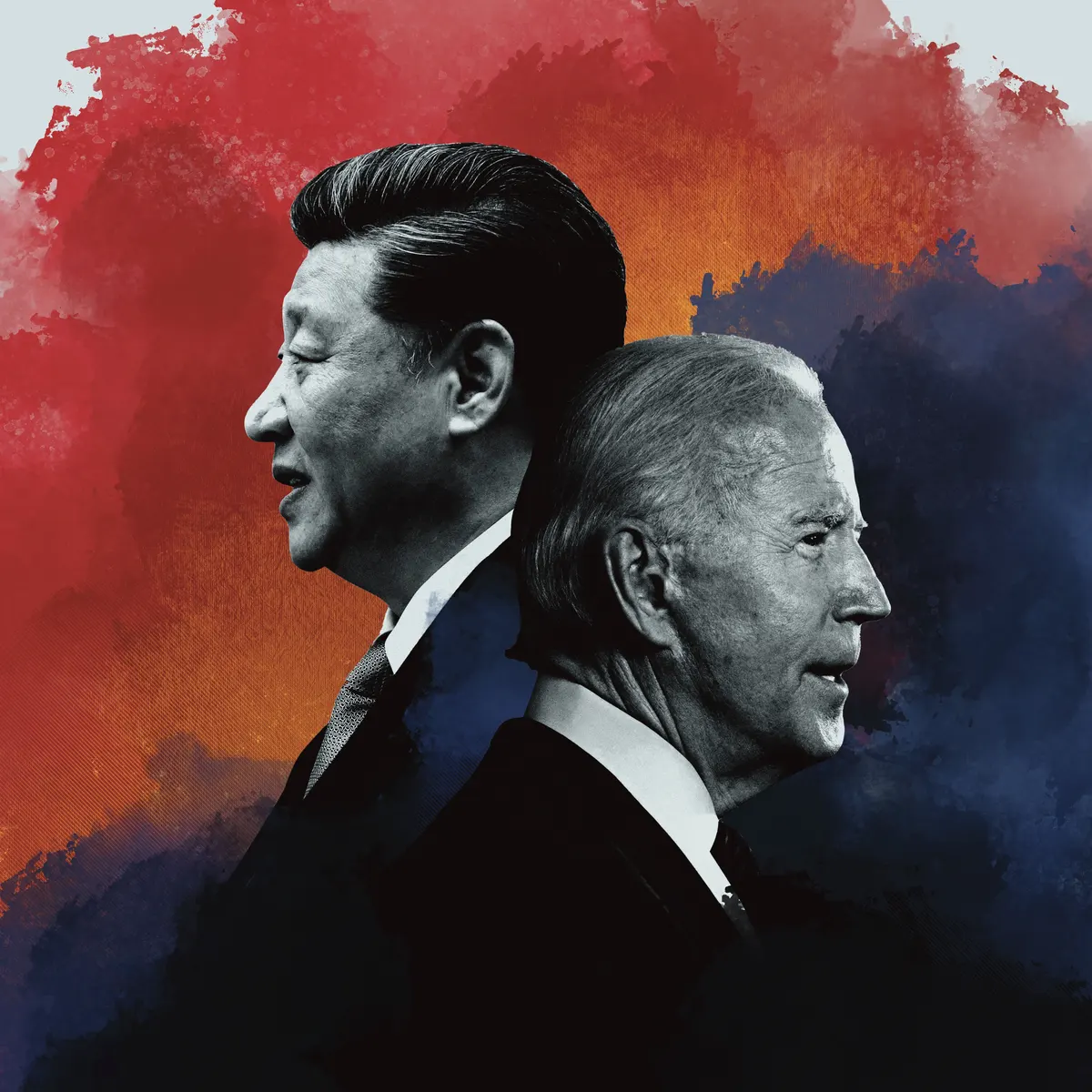Introduction
In a bid to establish self-reliance in chip technology, China has been pushing for the development of a robust domestic semiconductor industry. Recent efforts have seen the rise of SEIDA, a Chinese startup founded by former executives of Siemens EDA, a prominent American Electronic Design Automation (EDA) tool company.
SEIDA, short for “ENABLE CHIP SUCCESS,” is a Chinese startup aiming to disrupt the dominance of American Electronic Design Automation (EDA) tools. Former Siemens EDA veterans founded SEIDA in 2021, with the backing of the Chinese government’s ambitions to establish a self-sufficient semiconductor industry.
SEIDA’s mission to break the foreign monopoly in advanced chip design tools is a testament to these Chinese natives’ determination to achieve technological supremacy. This article will delve into the details surrounding SEIDA’s emergence and its potential impact on the EDA tool market.
Join TechoVedas Community here
Breaking the Monopoly: SEIDA’s Vision
SEIDA’s target is broad, encompassing various EDA tools used throughout the chip design process, including:
- Front-end tools: for design and simulation (e.g., logic synthesis, placement & routing)
- Back-end tools: for physical design and manufacturing (e.g., layout, verification)
- Implementation tools: for translating designs into manufacturing instructions
American companies like Synopsys, Cadence, and Mentor Graphics have long held a near-monopoly in this space, with their tools deeply entrenched in the global chip design workflow.

Read More: What are the Key Factors driving EDA Companies Huge Growth ?
The founders of SEIDA
Liguo Zhang’s path toward SEIDA began at Mentor Graphics Corp, the predecessor company to Siemens EDA, acquired by Munich-based Siemens in 2017. Mentor, started in Oregon in 1981, was an early innovator of EDA and eventually became one of three U.S. companies that sell most of the software worldwide. By the time of its acquisition, Mentor boasted annual revenues of $1.2 billion.
With a master’s degree in microelectronics from a Shanghai university, Zhang worked for more than a decade at Mentor and Siemens EDA, according to SEIDA’s 2022 presentation to investors. Before joining the startup, he was a Siemens EDA product director. Zhang is now 44 years old, according to U.S. and Chinese records.
He became chief executive of SEIDA in July 2022, according to the SEIDA filings.
Three other Chinese-born colleagues who joined Zhang were also longtime employees of Siemens EDA. Two of them, Zhitang “Tim” Yu and Yun Fei “Jack” Deng, earned doctorates from U.S. universities, academic records show. Born in China, Yu is also an American citizen, according to U.S. records. Deng, also born in China, obtained legal permanent resident status in the United States.
Read More: Explained: What The Hell Is Internet of Things (IoT)? – techovedas
Investors in SEIDA
As they sought investors last year, SEIDA executives aimed high. In the 2022 slideshow, they projected the company could be worth as much as 700 million yuan, or $99 million, by the end of last year. By 2026, they said, SEIDA hoped to sell shares to the public.
Their efforts attracted at least one important backer.
In June 2023, SEIDA received undisclosed funding from China Fortune-Tech Capital Co, or CFTC, an investment vehicle owned by chipmaker SMIC, according to records compiled by Datenna and PitchBook Data Inc, a U.S.-based corporate research company.
SEIDA continues to secure investors. This month, according to its corporate filings, five more investors, including four Chinese venture capital firms, acquired stakes in the company.
US tries to contain China through sanctions
Sanctions imposed by the United States on China’s semiconductor industry include:
Restrictions on SMIC: Semiconductor Manufacturing International Corporation or SMIC, China’s leading microchip manufacturer, has been added to the U.S. Entity List, limiting its access to American technologies due to concerns about its alleged involvement with China’s military.
Export controls on EDA tools: The U.S. has imposed measures to limit China’s access to advanced chip design tools, including EDA software, which are predominantly developed and sold by American companies.
Sanctions on Huawei Technologies: Huawei, a Chinese telecommunications giant, has faced restrictions due to national security concerns. It has been added to the Entity List, hindering its access to advanced chip and software technologies.
Increased scrutiny on technology transfers to China: The U.S. government has tightened export controls and implemented other measures to prevent China from obtaining know-how that could match microchip advances made by the U.S. and its allies.
Encouraging allied countries to adopt similar restrictions: The U.S. has urged its allies to impose export controls and restrictions on technology transfers to China, seeking to limit China’s access to advanced semiconductor technologies from multiple sources.

Are these sanctions working?
A yes and a no. We have reported the impact to Huawei in one of our previous articles but the sanctions are instead fuelling Chinese innovation. Experts believe these measures are unlikely to hinder China’s progress in the chip technology domain.
The Chinese government has implemented programs like “Thousand Talents,” which provide incentives for skilled Chinese experts to return from working overseas. These initiatives aim to bolster China’s domestic chip sector and reduce its reliance on foreign technology.
The interconnected nature of today’s global economy, especially within the semiconductor market, makes it increasingly difficult for the US to sever China’s access to advanced chip design tools. As such, recent US export controls, designed to slow down Chinese technology acquisition, have instead prompted China to rely on its own resources and build upon existing foreign knowledge.
Read More: Top EDA Tools in Each Step of ASIC Design Flow
What does it take to design an EDA tool?
Although SEIDA is on the path to enter a market which is heavily dominated by US stalwarts like Cadence, Synopsys and Mentor Graphics (not considering Siemens as the inventor), EDA design isn’t a cake walk. The Chip design itself is a complex process, let alone the software to design them.
The technologies involved are so complex that only years of experience with existing purveyors would allow them to offer similar products.
Potential IP infringements
The founding of SEIDA by former Siemens EDA executives has raised questions about potential IP infringements. While SEIDA and its executives have not been accused of wrongdoing, the nature of EDA tools and the complexity involved suggest that it would be difficult to independently develop OPC software without access to existing intellectual property.
The expertise required and the turnover of personnel within the industry further complicate investigations into export violations or claims of IP theft. SEIDA asserts that it adheres to U.S. and Chinese rules, claiming to have a stringent vetting process to ensure no infringement upon the intellectual property of others.
The Chaos of speculations about SEIDA
The company’s objectives and focus have reportedly evolved since its business-plan presentation in 2022, necessitating ongoing assessment of its strategies. The exact progress SEIDA has made towards successfully launching the OPC software remains unclear.
Reuters a news reporting agency was researching upon SEIDA but they couldn’t determine whether China’s government had any role in the company’s launch or whether Zhang, the chief executive, or his colleagues received any state incentives to leave Siemens EDA and work there.
SEIDA, the filings show, is majority-owned by partnerships now controlled by Zhang and some of the former Siemens EDA colleagues who joined him. It isn’t clear when those partnerships were established or by whom. Records show the partnerships invested in SEIDA in November 2021 – weeks after the startup’s launch and before Zhang left Siemens EDA.
SEIDA declined to make Deng or Yu available for interviews
Under the new export restrictions, U.S. citizens and permanent residents can face penalties if they help Chinese companies develop or manufacture advanced chips without a license. Those penalties can include citations, fines or prison time, depending on the violation.
Chang, the chief operating officer, said by email to Reuters: “We continuously monitor both emerging and existing regulations to ensure our operations align with applicable legal standards.”
Chang wouldn’t say if the ongoing review of SEIDA’s business plan means a departure from its early marketing of OPC. “Due to the confidential nature of our business strategies, specific details of our current and future plans cannot be disclosed,” Chang wrote to Reuters
Response by Chinese Foreign Ministry
The Chinese foreign ministry has responded to concerns raised by the United States regarding technology transfers and intellectual property. In a statement, the spokesperson described the U.S. measures as “abuses of export control measures” and “illegal unilateral sanctions.” The spokesperson emphasized that China has adopted laws to protect intellectual property and complies with internationally accepted rules. Additionally, the statement highlighted China’s advancements as a result of Chinese ingenuity and hard work, refuting claims of theft or robbery.
Conclusion
SEIDA’s emergence as a contender in China’s push for advanced chip technology independence underscores the challenges faced by the United States in limiting China’s access to critical EDA tools. The startup’s goal to break the foreign monopoly in microchip design software highlights China’s determination to achieve self-reliance in chip technology. The rivalry between the US and China in this sector will undoubtedly shape the future of semiconductor industry technology.





